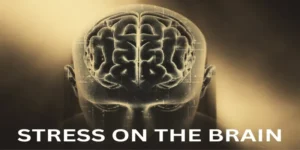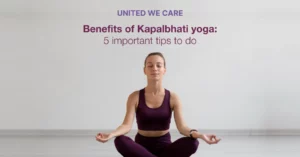Introduction:
Thriving in a world full of uncertainty requires immense mental strength. Meditation is that escape from the world that allows you to rejuvenate your mental strength. It is a journey of self-exploration and allows for discovery, rather than re-discovery, through a quiet reflection of your own life. Taking the time to meditate, away from the constant hustle and bustle of a fast-paced life, can help you feel grounded. Gradually, this helps re-establish touch with your true inner power and helps attain peace through self-realisation.
Our Wellness Programs
What is Raja Yoga?
Raja Yoga is one of the four traditional schools of yoga, along with Gyan (knowledge), Karma (action), and Bhakti (devotion). These schools guide towards a single aim – achieving moksha (liberation).
“Raja” means ‘king’ or ‘royal’ in Sanskrit, thus reinstating Raja Yoga as a “Royal” path to liberation. Raja yoga is the path of continued self-discipline and practice. It allows the practitioner to be independent, fearless and autonomous like a king. It is considered the yoga of body control and mind control and focuses on energetics apart from your regular meditation.
Raja yoga includes the teachings from all the different paths of yoga, a bit like how a king includes all his subjects from the kingdom, no matter their origin and instructions. Raja yoga implicates both the goal of yoga – i.e., spiritual liberation, and the method of attaining this moksha. Raja yoga is considered a state of mind – one of eternal peace and contentment brought about by sustained meditation.
Raja yoga involves all three dimensions of humans (physical, mental and spiritual), thus enabling balance and harmony across all three.
Looking for services related to this subject? Get in touch with these experts today!!
Experts

Banani Das Dhar

India
Wellness Expert
Experience: 7 years

Shariha

India
Psychologist
Experience: 8 years

Preethi Jain

India
Psychologist
Experience: 15 years

Devika Gupta

India
Wellness Expert
Experience: 4 years

Trupti Rakesh valotia

India
Wellness Expert
Experience: 3 years
What are the differences between Raja Yoga and Hatha Yoga?
There have been numerous theories surrounding the different schools of yoga. However, the significant forms of yoga are Raja Yoga and Hatha Yoga.
Hatha Yoga focuses on physical well-being and involves all the asanas. Its primary purpose is to awaken and accumulate all the body’s subtle energies through different asanas such as pranayam, mudra, etc.
Due to its inclusive nature, Raja Yoga naturally focuses on overall health. It helps achieve inner peace and stress relief and also supports physical fitness. Raja Yoga aims to awaken the highest state of consciousness. It uses mental forces to achieve ‘samadhi,’ which is considered the ultimate goal of human life. It uses exercises that focus on mind control and mental powers. These exercises are primarily meditation-based.
Hatha Yoga is a preparatory phase to Raja Yoga; hence it comes from Raja Yoga itself.

How does Raja Yoga differ from other forms of yoga?
Raja Yoga is a form of Yoga that is easily accessible to people from all backgrounds. It is primarily meditation-based and requires little to no physical activity.
The Bhagavad Gita prominently mentions other yoga schools like Karma Yoga, Gyan Yoga, and Kriya Yoga. However, it does not view Raja Yoga as a path to enlightenment. Instead, it described the practice as a synonym to civilisation itself.
Raja Yoga focuses primarily on achieving transcendental consciousness through mental well-being. For this, it just requires a lot of focus and dedication. It requires no knowledge of rituals, mantras, or even asanas, unlike Hatha Yoga.
The versatility of Raja Yoga is perhaps that it is simple enough to be performed anywhere, anytime. It is straightforward to practice as you can achieve it with “open eyes.” All that is required is a simple lotus pose and lots of concentration.
The four main principles of Raja Yoga
Since Raja Yoga encompasses all types of Yoga, it is bound to contain their principles. However, the four main principles that Raja Yoga focuses on are
- Complete dissociation from self: This is the ultimate goal of Raja Yoga. To gain knowledge about the true self, complete dissociation from the self is pertinent.
- Complete surrender: All forms of Yoga are incomplete without total belief in the unseen and devotion to Ishvara.
- Renunciation – To achieve true consciousness, one must separate themselves from external events or external things. Attachment to any emotion or event can hamper one’s ability to achieve true liberation.
- Control over the life force – Raja Yoga is the ultimate step to liberation. For this, one must achieve absolute control over the pranic energies, one’s life forces, to achieve true mental freedom.
These principles allow a Raja Yogi to be able to:
- Maintain a work-life-sleep-diet
- Establish harmony with nature’s rhythms
- Achieve a character that is pure and nonjudgmental
- Take responsibility for their life
- Control their emotions and remain worry-free
Avoid distractions
Train the mind through techniques of meditation
The Eight Limbs or Steps of Raja Yoga
Raja Yoga is also known as Ashtanga Yoga (Eight Steps of Yoga) as it has eight limbs or steps that lead to the highest state of consciousness. These stepping stones provide methodical teachings to achieve Samadhi, which is incidentally the eight-step itself.
1. Yama – This refers to self-control by practising five social abidances. They are asteya (non-stealing), Satya (truthfulness), ahimsa (non-violence), aparigraha (non-possessiveness), and brahmacharya (chastity).
2. Niyama – This means discipline by practising five moral abidances. They are svadhyaya (self-study), aucha (purity), tapas (self-discipline), santosha (contentment), and ishvarapranidhana (devotion or surrender).
3. Asana – This comprises physical exercises or yoga postures.
4. Pranayama includes breath exercises to control your life energies, i.e., prana.
5. Pratyahara – This refers to withdrawing the senses from external objects.
6. Dharana – Concentration
7. Dhyana – Meditation
8. Samadhi – Complete realisation or enlightenment
These steps offer a systematic approach to achieving enlightenment because, ultimately, Raja Yoga is a means of transcending recognition of the body-mind-intellect complex to achieve true liberation and fully understand the nature of oneself.
Raja Yoga is a path to self-realisation. It helps you attain mental peace that can help you gain control of your own life. Each principle and step of Raja Yoga can help bring you closer to yourself, be free of worries about the future, and live a much more peaceful and stress-free life.
References:
- What is Raja Yoga? – Ekhart Yoga (no date). Available at: https://www.ekhartyoga.com/articles/philosophy/what-is-raja-yoga
- What Is Raja Yoga? – YOGA PRACTICE (no date). Available at: https://yogapractice.com/yoga/what-is-raja-yoga/
- The 4 Paths of Yoga: Bhakti, Karma, Jnana, and Raja (no date). Available at: https://chopra.com/articles/the-4-paths-of-yoga
- The four paths of Yoga – Trinetra Yoga (no date). Available at: https://trinetra.yoga/the-four-paths-of-yoga/
- What is Raja Yoga? Comparison of Raja Yoga and Hatha Yoga (no date). Available at: https://yogaessencerishikesh.com/what-is-raja-yoga-comparison-of-raja-yoga-and-hatha-yoga/
- Hatha Yoga and Raja Yoga – Benefits for the Body and the Mind – India (no date). Available at: https://www.mapsofindia.com/my-india/india/hatha-yoga-raja-yoga-benefits-for-the-body-and-the-mind
- What is Raja Yoga? – Definition from Yogapedia (no date). Available at: https://www.yogapedia.com/definition/5338/raja-yoga
- Raja Yoga (no date). Available at: https://www.yogaindailylife.org/system/en/the-four-paths-of-yoga/raja-yoga
- Brahma Kumaris – What is Raja Yoga Meditation? (no date). Available at: https://www.brahmakumaris.org/meditation/raja-yoga-meditation

















